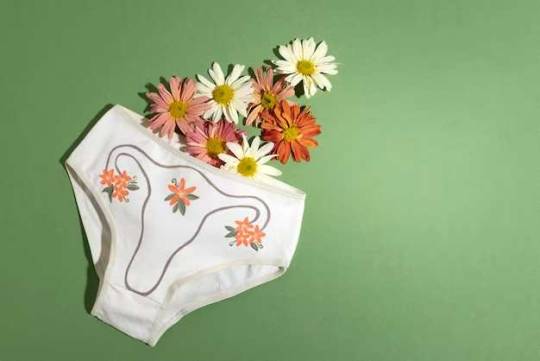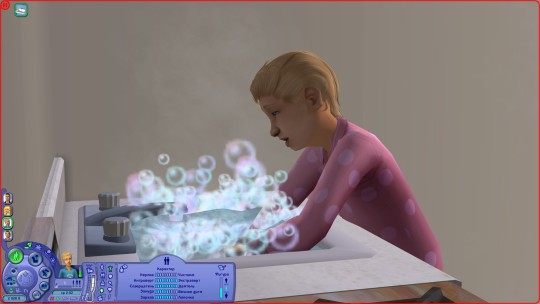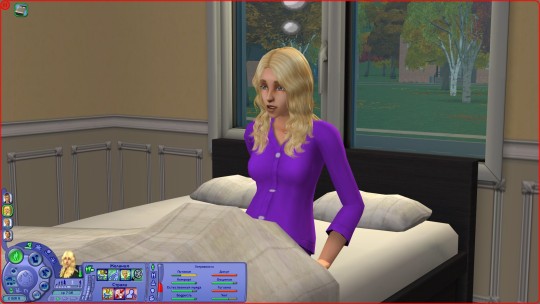#Incontinence After Childbirth
Text
What Is Urinary Incontinence?

When it comes to people’s lives, urinary incontinence is described as a condition. You will experience leak urine, and bladder control, when you have incontinence. While the leakage can negatively impact your life, it is uncontrollable.
It is seen that your unitary system is made bladder ureters, and urethra. While they store, filter, and remove wastes from your body, these parts do several jobs. While creating urine, waste products are removed from your blood by kidneys. Kidneys are filters of your body.
It is seen that urine will be collected till they leave your body, as ureters connects with the bladder. Your brain will give you signal to urinate, as your bladder gets full. It is necessary to develop natural bladder control so that you do not develop unnecessary desire for urinating.
While the urine will flow out of your body, your muscles will gradually relax.
What Are the Different Types of Incontinence?
There are various types of incontinence. While triggering for urine leakage, these types of different characteristics and causes of this condition. It is necessary that you should understand the treatment plan and diagnosis for your condition.
Types Include:
Urge Incontinence
It is seen when you have intense need to urinate right away, you will know that you have urge incontinence. While you may end up leaking urine, your will know that you have go to the toilet in a hurry.
There can be overactive bladder that can cause this condition. There can be OAB for various reasons like lower-level estrogen after menopause, infection, nerve damage, and weak pelvic muscles.
There are caffein, some beverages like alcohol and medications, which are responsible for OAB.
Stress Incontinence:
There can be stress incontinence after childbirth, once you leak urine during your activities. Your pelvic muscles will not support your pelvic muscles as they should if you have developed such condition.
When you move around, your muscles are going to leak urine in accidental way. There will be leakage if you cough, laugh, and do other activities, in situation of incontinence after childbirth.
There will be pressure on your bladders, due to these actions. You are more likely to leak urine if you do not have the support of strong pelvic muscles. There can be stress incontinence after childbirth, as it happens to women after childbirth.
There can be development of such condition for men as well.
Overflow Condition
The overflow incontinence can also place pressure on your bladder. You will have such condition if you have bladder that does not get completely empty, after each time you urinate.
There can be development of such condition, once you undergo incontinence after childbirth. It is necessary that you should think bladder as a juice jug. There can be risk of spilling if you only pour some of the juices out of the jug.
You will never have completely empty bladder if you develop such condition. There will be risk of spilling as well. While you have big gush of urine, there will be also dripping of small amount of urine as well.
If you have stroke, or diabetes and other types of chronic conditions, you will have incontinence after childbirth. When men have large prostrate, they may also develop such condition.
What Are the Symptoms of Incontinence?
When it comes to symptoms of incontinence, you will know that leakage of urine is the main symptom. While you are small amount of leaked urine, you may have large amounts as well if you have developed such condition.
The symptoms of incontinence can also due to wide number of reasons. There can leak due to several reasons. They are:
Cough
Exercise
Sneeze
When it comes to functional incontinence, you will know that it is one of the symptoms of incontinence.
There can be urge incontinence, which is one of the symptoms of incontinence. When it comes to symptoms of incontinence, doctors will say mixed incontinence is another cause.
How Is Incontinence Treated?
There are several ways doctors will perform urinary incontinence treatment. You need to take big considerations for treatment if you develop such condition.
It is necessary that you should discuss about the urinary incontinence treatment. You will need to be comfortable with the treatment process.
When it comes to urinary incontinence treatment, doctor will say about various types of treatment for such condition.
While medication is one of urinary incontinence treatment, doctors will give medication to control your leakage.
There is advice for lifestyle change, which is another treatment is urinary incontinence treatment.
Final Words
There are lots of things to know about incontinence. While you will be able to overcome the condition, you will get better with various treatments.
0 notes
Text
I want a body-swap fic but with the weird shit spelled out. Lay it all on the table.
Jason (in Dick’s body): Why are you so HORNY all the time?!
Dick (in Jason’s body, defensively): Why AREN’T you?
Steph (emerging from the bathroom in Tim’s body): Tim, what the fuck is wrong with your teeth? I just brushed them and my gums are still bleeding.
Tim (in Steph’s body): Oh yeah that happens sometimes, don’t worry about it. Um, also, I feel like maybe. You need to explain to me how to insert a tampon. Um. Or you could do it. Or um. Maybe you just peed? It’s totally normal for women to have incontinence after childbirth, no big deal at all, just. Um. Let me know what I’m working with here?
Steph: Jesus fucking Christ.
EDIT: I wrote it everyone. Now I can rest.
#body swap#I will write this fic I swear to god#unless I immediately forget#Batman#fanfic#jason todd#dick grayson#batfamily headcanons#tim drake#stephanie brown
99 notes
·
View notes
Note
Your leshycat pregnancy comic is my favorite
i love it so much
i hope this was easy to translate!

Hi, it's a pleasure to read this.
I have a translator helping me with the translation, so it's fine.
Actually these comics are just quick drawings for me to make fun of. But I still wanted to keep a bit of believability in these comics. Childbirth, it's scary, it's painful, and it doesn't end with childbirth, because now you have to babysit a baby when your body is still in shock. In fact, I am greatly educated in this topic, even though I have not given birth myself and in the near future I do not plan to, but it is not surprising given how many horrors I had to learn.
In fact, there were many scenarios. I can say two of them, those that will never materialize:
I had the idea of open bleeding after childbirth because the cloaca Leshy could not stretch to the size of the egg and ruptured, I can say that there would be a lot of blood and then would have to stitch. But I refused, it was difficult to realize and very long.
When I drew the postpartum Leshy I wanted to add a lot more consequences. For example as changes in the blood clotting system, incontinence or hemorrhoids. There were also more "harmless" consequences like hair loss or in this case leaves, but I thought that Leshy had suffered enough.
And that it was not one solid text I will add a picture with a small scheme.
The leshy actually has rather narrow hips, more volume is given to him by his leaves. And if you're wondering how the egg went through his pelvis, it's simple and painful….. The pelvic bones can move apart during childbirth, now live with it.
52 notes
·
View notes
Text
Тимофей
Казалось, Тимофей и его жена отлично справляются с близнецами. Вместе учат их разговаривать, ходить,
(Timofey and his wife seemed to be coping well with the twins. Together they teach them to talk, walk,)


мечтают о рождении еще одного ребенка.
(dream of having another child)

Вот только Олеся стала излишне раздражительной, постоянно попрекала мужа.
(But Olesya became overly irritable and constantly reproached her husband)

А Тимофей и так старался изо всех сил, почти падая от усталости: детьми занимался, на работу ходил, огромные счета оплачивал. Он же не виноват, что ему повышение не давали. У него просто нет времени и сил, чтобы навыки повышать.
(But Timofey tried his best, almost collapsing from fatigue: he took care of the children, went to work, paid huge bills. It’s not his fault that he wasn’t given a promotion. He simply does not have the time and energy to improve his skills)



Олесе он ни разу выговор не сделал за то, что кормит его горелым. Даже выслушать готов ее опасения, что еще одного ребенка они финансово не потянут. Не работает ее мантра про заек и лужаек.
(He never reprimanded Olesya for feeding him burnt food. He is even ready to listen to her concerns that they will not financially support another child. Her mantra about bunnies and lawns doesn’t work)

Олег развивался быстрее брата, поэтому вместо подготовки к работе Тимофей учил Толю ходить. А то как его в школу отправлять, ползком? Времени-то совсем мало, вечером у мальчишек День рождения.
(Oleg developed faster than his brother, so instead of preparing for work, Timofey taught Tolya to walk. Otherwise how will they send him to school? Crawl? There is very little time, the boys have a birthday in the evening)

Разумеется, Тимофей пригласил на праздник всю свою семью, только Олеся была не рада их визиту.
(Of course, Timofey invited his entire family to the holiday, only Olesya was not happy about their visit)

Похоже, Тося выбрала себе любимого внука,
(It looks like Tosya has chosen her favorite grandson,)

и по непонятной причине вместо мужа, Ильи, взяла соседей: Эдуарда и Васю.
(and for some unknown reason, instead of her husband, Ilya, she took neighbors: Eduard and Vasya)

Близнецы выросли отрадой родителей, но у Олега оказалось больше баллов счастья.
(The twins grew up to be the delight of their parents, but Oleg had more happiness points)

Зато Толя характером пошел в бабулю. Только подрос, как спорить со взрослыми начал.
(But Tolya’s character was like his grandma’s. As soon as he grew up, he began to argue with adults)

А Тося на внука нарадоваться не может. Чем бы дитя не тешилось, лишь бы училось хорошо.
(And Tosya can’t get enough of her grandson. Whatever the child enjoys, as long as he studies well)

В отличие от брата, Олег развлекал себя рисованием. Заодно повышал свой навык.
(Unlike his brother, Oleg entertained himself by drawing. At the same time, he improved his skills)

Хоть маленький ангелочек был неряхой, но сам решил помочь родителям с мытьем посуды после гостей.
(Although the little angel was a slob, he decided to help his parents with washing the dishes after the guests)

Олесе бы радоваться, что муж у нее заботливый, дети умничками выросли. Это ли не счастье? Но чувствовала она тревогу и неуверенность в будущем, а ночью обнаружила, что беременна.
(Olesya should be glad that her husband is caring and her children have grown up smart. Isn't this happiness? But she felt anxiety and uncertainty about the future, and at night she discovered that she was pregnant)


За ночь страхи ее не прошли. И желала, и не хотела она этого ребенка. Боялась Олеся снова пройти через токсикоз, недержание и роды.
(Her fears did not go away overnight. She both wanted and did not want this child. Olesya was afraid to go through toxicosis, incontinence and childbirth again)

39 notes
·
View notes
Text
An MP has described the “terrifying” moment she believed she was going to die in childbirth as she called on the Government to do more to help women who experience traumatic births.
Conservative MP Theo Clarke (Stafford) received a rare round of applause from the public gallery in the House of Commons from mothers and campaigners as she gave what she described as “probably the most personal speech” she will make in Parliament.
Describing her own experience, she said: “After a difficult 40 hours of labour I began bleeding very heavily after delivery.
“I was separated from my baby and rushed into the emergency room for surgery.
“I remember the trolley bumping into the walls and the medical staff taking me into theatre, and being slid onto the operating table. I spent over two hours awake without a general anaesthetic, and I could hear them talking about me, and obviously it was not looking good.
“It was the most terrifying experience of my life.”
Visibly upset, the MP broke off and took an intervention, before continuing: “I genuinely thought I was going to die.”
The MP was opening what she described as the first debate on birth trauma in the history of the Commons.
She said her own experience “completely opened my eyes to challenges with post-natal care”.
At one point, while in recovery, she said she was lying next to her baby, who was screaming, and unable to pick her up she pressed a call button for help, only for the person to respond by saying “not my baby, not my problem”, before leaving.
The MP said such a moment was “unacceptable”, and said there is a need to address the “postcode lottery” of services available across England.
She described her own birth injury, a third degree tear, which she said occurs in about three in 100 women.
The consequences of an obstetric anal sphincter injury, she said, can include urinary and faecal incontinence, chronic pain, sexual dysfunction and other mental and physical effects, adding: “It is very clear, we must do more to help women.
“We need to break the taboo by talking about this,” she said.
Outlining her requests to the Government, she said: “It is so clear to me that so much more needs to be done to support women who experience traumatic births.
“Today I call for the Government to add birth trauma to the women’s health strategy, recruit more midwives, ensure perinatal mental health services are available across the UK, provide appropriate and mandatory training for midwives with a focus both on mental and physical health, ensure that the post-natal check with your GP is provided to all mothers and will include separate questions both for the mother’s physical health and mental health.”
She also called for an improvement in continuity of care and national post-birth services, for the obstetric and anal sphincter care bundle to be rolled out to all hospital trusts in England, and to provide better support for partners and better education for women on birth choices and risks.
Responding to the debate, health minister Maria Caulfield said: “By early part of next year, every integrated care system in England, and I can’t comment what’s happening in Labour-run Wales, but in England we will have a fully working maternal mental health service to support mothers experiencing moderate, severe or complex mental health difficulties.
“It is true that the number of women accessing perinatal mental health services has risen almost 50% over two years, but that’s actually good news because we want women to come forward, our challenge as a Government in England is to be able to meet that demand.”
On the women’s health strategy, she said: “We will be updating our year-two strategy fairly soon and we’ll be setting out our priorities and I can let members know about that as soon as possible.
“This is a priority for the Government and we are seeing change, but more change needs to happen.”
On Thursday, the Department of Health and Social Care also unveiled plans for how it intends to implement NHS pelvic health clinics across all areas of England – first announced in 2021 – which follows a number of pilot schemes, and which the Government said will provide better information for pregnant women, and improved aftercare.
59 notes
·
View notes
Text
Sexy But Psycho: How the Patriarchy Uses Women’s Trauma Against Them (Jessica Taylor, 2022)
"Despite research showing that autoimmune issues are more likely in women due to our immune systems being more flexible and more complicated than men’s to enable us to carry and grow a foetus during pregnancy, half of women will receive a psychiatric diagnosis before being diagnosed correctly with an autoimmune condition.
In 2020, a review into the vaginal mesh scandal in the UK found that thousands of women had been dismissed as having psychological and psychiatric issues when they raised concerns.
Vaginal mesh is a piece of material that can be used in surgery to treat pelvic organ prolapse and bladder incontinence in women, usually after childbirth.
However, when women started to complain that the mesh was causing them significant pain during sex and in their day-to-day lives, their concerns were met with the usual accusation: psychiatric issues.
Many women were told that they were mentally ill hypochondriacs who were complaining about something small.
It is clear that women are being failed – and ultimately, psychiatry has a lot to answer for.
Women are routinely told that they are overreacting, exaggerating or lying about their pain or symptoms – and are often told that they have health anxiety.
Despite doctors regularly ridiculing women for Googling symptoms and health advice, women are more and more likely to turn to internet forums, Facebook support groups and academic journals for their health advice.
Sick of the process of being gaslit for ten minutes in a rushed GP appointment whilst a doctor tells them that it’s all in their heads, women are now much less likely to seek help than they ever have been."
11 notes
·
View notes
Text
Can I Exercise During Pregnancy?
Pregnancy is a transformative experience, often accompanied by a myriad of questions about health and well-being. One common query among expectant mothers is, "Can I exercise during pregnancy?" The short answer is yes, but with some important considerations. Exercising during pregnancy can offer numerous benefits for both the mother and the baby, provided it is done safely and under medical guidance. In this blog, we'll explore the advantages of prenatal exercise and provide tips for staying active, with insights from the experts at the best fertility clinic in Delhi, SCI IVF Hospital.
Benefits of Exercising During Pregnancy
Engaging in regular physical activity during pregnancy can lead to numerous health benefits, including:
Improved Mood and Energy Levels: Exercise can help alleviate common pregnancy symptoms such as fatigue and mood swings by boosting endorphin levels.
Better Sleep: Regular physical activity can improve sleep patterns, helping expectant mothers get the rest they need.
Reduced Pregnancy Discomfort: Exercise can help alleviate back pain, swelling, and constipation, which are common complaints during pregnancy.
Easier Labor and Delivery: Strengthening the body through exercise can lead to a smoother labor and delivery process.
Faster Postpartum Recovery: Women who exercise during pregnancy often experience quicker recovery post-birth.
Safe Exercise Practices
While exercise is beneficial, it is essential to approach it with caution during pregnancy. Here are some tips from the best IVF doctor in Delhi to ensure safe prenatal workouts:
Consult Your Healthcare Provider: Before starting any exercise regimen, it's crucial to get the green light from your healthcare provider, especially if you have any pregnancy complications.
Choose Low-Impact Activities: Opt for low-impact exercises such as walking, swimming, prenatal yoga, and stationary cycling. These activities are gentle on the joints and reduce the risk of injury.
Stay Hydrated and Avoid Overheating: Drink plenty of water before, during, and after exercise. Avoid exercising in hot, humid conditions to prevent overheating.
Listen to Your Body: Pay attention to how your body feels during exercise. If you experience dizziness, shortness of breath, or any unusual symptoms, stop immediately and consult your doctor.
Modify as Needed: As your pregnancy progresses, you may need to modify your exercise routine. Avoid activities that involve lying flat on your back after the first trimester and exercises that pose a risk of falling or abdominal trauma.
Exercise Recommendations
The experts at SCI IVF Hospital suggest incorporating the following types of exercise into your routine:
Aerobic Exercise: Activities like walking, swimming, and dancing can help maintain cardiovascular fitness without putting too much strain on your body.
Strength Training: Light resistance training with weights or resistance bands can help maintain muscle tone. Focus on exercises that target major muscle groups.
Flexibility and Balance: Prenatal yoga and stretching exercises can improve flexibility and balance, which are beneficial as your center of gravity shifts.
Pelvic Floor Exercises: Strengthening the pelvic floor muscles through Kegel exercises can help prevent urinary incontinence and prepare the body for childbirth.
Seeking Professional Guidance
For personalized advice and support, consider consulting with specialists from the best fertility clinic in Delhi. At SCI IVF Hospital, the best IVF doctors provide comprehensive care and guidance for expectant mothers. They can help tailor an exercise plan that meets your specific needs and ensures the health and safety of both you and your baby.
Conclusion
Exercising during pregnancy can be incredibly beneficial when done safely and thoughtfully. By following these guidelines and seeking advice from healthcare professionals, you can enjoy an active and healthy pregnancy. For expert care and support, trust the team at SCI IVF Hospital, the best fertility clinic in Delhi, where the best IVF doctors are dedicated to your well-being every step of the way.
4 notes
·
View notes
Text
...I just saw an ad for Depends for Men, and I just wanted to share how proud I am that we can finally talk about men having incontinence issues without shaming men.
Women...the pelvic muscles do get weakened over time. They get weakened from childbirth, and also from lack of orgasms (no, seriously, that is an issue; those suckers are kegel exercises when "done right"), and also just from age in general. We expect to hear about women needing Depends...and we hear about women needing them because "women are weak!"
So the lack of hearing about men needing them has long been a deliberate enforcement of the toxic masculinity idea that they don't need genuine help...and if they do, well, then "that man is too weak to be a man!" *eyeroll, heavysigh*
...Perhaps you can see why I'm excited to see an advertisement about a man being confident in an important moment (walking his daughter up the aisle on her wedding day), not having to worry about a little uncontrollable moment of bladder leakage staining his fancy wedding suit trousers.
This is an older man having the best day of his life, helping see his child get married and hopefully have her Happily Ever After, as he himself hopefully got to have one, too, presumably in marrying her mother. And he is seen as strong enough to use the protection needed to make sure the day isn't spoiled by embarrassment at...well..something that just happens as you get older.
Because those pelvic floor muscles are there in all humans, regardless of gender, and they do get weakened over time. Age does that to a person. And not only needing help, but using something to help? That is a source of strength in this moment, in this ad. It's not a source of shame, but a source of relief.
The ad especially didn't talk about how embarrassing things would be if he didn't use their product. it just talked about him having peace of mind on his daughter's big day.
It was an ad supportive of a genuine health issue that many men can and will face over the course of their lifetime, and I loved seeing it.
4 notes
·
View notes
Text
Cosmetic Gynaecology | Enhancing Female Well-Being
Cosmetic gynaecology has been in demand for the last few years due to its health and beauty benefits. With the technological advancement and advancement in healthcare, women are opting for it more and more to heal large vaginal tears, causing more discomfort and numbness during sexual activity. As it is more common for women to face complications during deliveries, this is not the only health challenge they face; some might struggle to control their urination while laughing, sneezing, or coughing. Many women face gynecological problems, so meeting the right cosmetic gynecologist in Hyderabad is essential.
In this blog, we have taken insights from Dr. Maalavika Appasani, the renowned cosmetic gynecologist, to understand how cosmetic gynecology can help women enhance their well-being. So let's get started!
What is cosmetic gynaecology?
Cosmetic gynaecology aids in improving the function or physical appearance of the labia and vagina as well. It can also help enhance pleasure in sexual activities. At the same time, cosmetic gynaecology can make your body's genitals look younger and more pleasing. Over the years, doctors found that pregnancy and childbirth can change the appearance of the vagina and its response to stimuli. Cosmetic gynaecology can help restore all this so that any woman can regain her confidence and plan to live a happy life.
If you are planning to undergo cosmetic gynecology and are trying to decide in which direction to go, first of all, you need to know if you are the right candidate for the treatment.
Who needs cosmetic gynaecology?
You might need to consult a cosmetic gynecologist under these conditions:
If you believe your vagina is lax after childbirth
If you have any discomfort or burning sensation in your vagina
If there is an odor or soreness in your vaginal area
If you leak urine when you sneeze, cough, cycle, laugh, and lift heavy weights
If you experience intercourse
If there is vaginal bulging and discharge
These conditions usually occur due to tissue aging and menopause, laxity, childbirth, pregnancy, low estrogen, smoking, obesity, and alcohol.
Moreover, you can also be a good candidate for this surgical treatment if you have reasonable expectations from this procedure and know all the risks. Also, there are some health issues you should consider before going to a cosmetic gynaecologist: high blood pressure, bleeding disorder, diabetes, depression, and heart issues, as they might reduce your chances of success.
Why opt for cosmetic gynaecology?
Why should you invest your money in cosmetic gynecology? Well! You are one of many thinking about this question. After talking to many women, the common reasons to opt for cosmetic gynecology surgery concluded are:
Religious reasons
To improve the appearance of vaginal lips, also known as labia
To boost self-confidence and bring back self-esteem
To improve sexual health and desire
Even though we believe every woman is beautiful and pregnancy is just a new chapter of your life coming with too many ups and downs, if you want to consult a cosmetic gynecologist for surgery, you are most welcome. Let's shed light on the surgical and non-surgical procedures that fall under cosmetic gynecology.
Surgical and Non-surgical Treatment options for cosmetic gynaecology
Vaginoplasty
Hymenoplasty
Vaginismus
Non-surgical V-tightening
Urinary- Incontinence
Loss of Libido
Clitoral blood reduction
G-spot
O-shot
Perineoplasty
Labiaplasty Surgery
Mommy Makeover
Since cosmetic gynecology works to enhance female well-being by improving sexual activity and rejuvenating the genitals, it is necessary to consider whom you can consult for your successful treatment. Dr. Maalavika Appasani is one of the best cosmetic gynecologists in Hyderabad. With more than 12 years of experience, she is Hyderabad's leading doctor and intimate care consultant. You can always feel free to talk to her without hesitation, as she keeps her patients' details private. So, if you have decided to go to a cosmetic gynecologist, she is the best doctor to consult with. To start today, book your consultation and plan a happier life!
2 notes
·
View notes
Text
Why Pelvic Health is Important
Pelvic health is a topic that often remains shrouded in silence and misconceptions. However, understanding the significance of pelvic health is crucial for everyone, regardless of age or gender. Today, we will delve into the reasons why pelvic health is important and how it can be supported through HEP (Home Exercise Programs) Physical Therapy and physical therapy management software.
Foundation of Core Strength
The pelvic region is at the core of our body's support system. It houses a complex network of muscles, ligaments, and connective tissues that provide stability to our spine, pelvis, and surrounding organs. Optimal pelvic health is essential for maintaining overall core strength, which is vital for balance, posture, and preventing injuries.
Urinary and Bowel Function
A healthy pelvis is closely linked to proper urinary and bowel function. Pelvic floor muscles play a key role in controlling these bodily functions. Conditions like urinary incontinence and fecal incontinence can be effectively managed and even prevented through pelvic floor therapy exercises, often included in HEP Physical Therapy programs.
Sexual Well-being
Pelvic health has a significant impact on sexual well-being. Both men and women rely on healthy pelvic function for sexual arousal, performance, and satisfaction. Pelvic floor muscle dysfunction can lead to sexual issues that may be addressed through pelvic health interventions.
Pregnancy and Postpartum Health
For women, pelvic health is especially crucial during pregnancy and postpartum stages. A strong and well-functioning pelvic floor is essential for carrying the baby during pregnancy and aiding in a smoother delivery. After childbirth, pelvic floor rehabilitation, often guided by physical therapy management software, can help restore muscle tone and alleviate postpartum issues.
Lower Back and Hip Pain
Pelvic health is closely linked to lower back and hip health. Dysfunction in the pelvic region can lead to chronic pain and discomfort in these areas. Physical therapy programs, including HEPs, can address these issues by focusing on strengthening and stabilizing the pelvic area.
Aging Gracefully
As we age, maintaining pelvic health becomes increasingly important. Age-related changes can weaken pelvic muscles and lead to various health issues. HEP Physical Therapy programs can help individuals of all ages preserve and improve their pelvic health, promoting a higher quality of life.
Prevention and Wellness
Understanding the importance of pelvic health is not just about addressing existing issues but also about preventing future problems. Incorporating pelvic floor exercises into your regular fitness routine, guided by physical therapy management software, can help maintain optimal pelvic health and prevent problems before they arise.
In conclusion, pelvic health is a vital aspect of overall well-being that often goes unnoticed until issues arise. By recognizing its importance and actively seeking solutions through approaches like HEP Physical Therapy, individuals can take control of their pelvic health and enjoy a healthier, more fulfilling life. Remember, a strong foundation in the pelvic region is the cornerstone of a healthy and active lifestyle.
3 notes
·
View notes
Text
O shot in San Diego
A relatively recent advancement in therapies for sex enjoyment and vaginal health is the O-Shot. It restores the health of your vaginal tissues while assisting you in reclaiming your femininity and confidence. By boosting pleasure and reviving sexual desire, the O Shot (Orgasm Shot) nonsurgical technique revitalises a woman's sexual life. This technique revitalises the vagina without the need of any drugs by utilising the patient's own natural growth hormones. The greatest O Shot in San Diego is what we offer. It is the ideal remedy for incontinence sufferers as well as women who are not happy with or wish to better their sexual life.

Who can get benefitted from it?
The O-Shot is advantageous for plenty of women. As a result of childbirth, the menopause, or other illnesses, you can eventually feel less sexual pleasure. You should be in a good relationship with your spouse and clear of any other illnesses that could be harming your vaginal health before thinking about getting the O-Shot in San Diego.
The O-Shot can be utilised to treat urine incontinence in addition to sexual enjoyment. Urinary incontinence may occur when laughing or sneezing as you get older or after having kids. But the O Shot San Diego can also aid you in avoiding future embarrassing issues with "leaks" during those activities.
To ensure no pain during the O-Shot treatment, we first apply topical lidocaine and tetracaine to the clitorus and anterior vagina. We then reapply the topical numbing cream many times over the course of 45 minutes. We do a quick blood test. Natural growth factors, such as those involved in nerve growth, are extracted and concentrated from the patient's blood sample using a specialised method. To achieve total anaesthesia, our Dr. then performs a clitoral nerve block. The higher vaginal clitoris and the G spot receive injections of the growth factors that were taken from your blood.
2 notes
·
View notes
Text
Pregnancy Exercise Class Near Me: A Guide to Staying Fit During Pregnancy
Pregnancy is a transformative journey that brings about significant physical and emotional changes. One of the best ways to navigate these changes is by staying active and engaging in exercises designed specifically for pregnant women. If you’re searching for a "pregnancy exercise class near me," it’s important to understand the benefits, types of exercises, and what to expect from such classes.
At BStudios Gym/Physical Fitness Centre, we offer specialized pregnancy exercise classes that cater to the unique needs of expecting mothers. Our goal is to help you maintain a healthy lifestyle throughout your pregnancy while ensuring the safety and well-being of both you and your baby.
Why Join a Pregnancy Exercise Class?
If you’ve been wondering, "Why should I join a pregnancy exercise class near me?", here are some reasons:
Improved Posture and Core Strength: Pregnancy often leads to posture changes and weakens your core muscles due to the growing baby. Our classes focus on strengthening these areas to reduce back pain and discomfort.
Boosts Energy Levels: Staying active during pregnancy helps combat fatigue. Regular exercise boosts energy levels, allowing you to feel more active and refreshed throughout the day.
Prepares Your Body for Labor: Strengthening key muscle groups and improving flexibility can make labor and delivery easier. Pregnancy exercise classes target these areas, preparing your body for childbirth.
Relieves Pregnancy Discomfort: Common pregnancy symptoms like swelling, leg cramps, and joint pain can be alleviated through regular exercise. Our classes are designed to help manage these discomforts effectively.
Supportive Environment: Joining a pregnancy exercise class near you provides the opportunity to connect with other expecting mothers, creating a supportive community that shares similar experiences and challenges.
What to Expect in a Pregnancy Exercise Class
Our pregnancy exercise classes at BStudios Gym/Physical Fitness Centre are tailored to ensure safety and effectiveness for expecting mothers at every stage of pregnancy. Whether you're in your first, second, or third trimester, we’ve got you covered.
Low-Impact Cardiovascular Workouts: Exercises like walking, swimming, or light aerobics are great for maintaining cardiovascular health without putting too much strain on the body.
Strength Training: Our classes incorporate light weights and resistance bands to help build and maintain muscle strength, which is crucial for carrying the extra weight during pregnancy.
Stretching and Flexibility Exercises: Gentle stretches are included to improve flexibility and relieve tension in the muscles and joints.
Pelvic Floor Exercises: Strengthening the pelvic floor muscles is essential for preventing incontinence and aiding in a smoother recovery after childbirth. Our instructors guide you through safe pelvic floor exercises.
Relaxation and Breathing Techniques: We also focus on relaxation techniques, including breathing exercises, that help reduce stress and anxiety, especially as you approach your due date.
How to Choose the Right Pregnancy Exercise Class Near You
When searching for a "pregnancy exercise class near me," it’s essential to consider a few key factors:
Certified Instructors: Ensure that the class is led by certified instructors who specialize in prenatal fitness. At BStudios Gym/Physical Fitness Centre, our instructors are trained in prenatal care, ensuring the safety and comfort of every participant.
Class Size: Smaller class sizes allow for more personalized attention, which is important during pregnancy. We limit our class sizes to ensure each participant gets the support and guidance they need.
Comfortable Environment: Pregnancy exercise classes should be held in a comfortable, non-judgmental environment where you can feel relaxed. Our gym provides a warm, supportive atmosphere for expecting mothers.
Location and Accessibility: Finding a convenient location is key, especially as pregnancy progresses. BStudios Gym/Physical Fitness Centre is easily accessible, making it the perfect choice for those searching for a "pregnancy exercise class near me."
Conclusion
Staying fit and active during pregnancy is one of the best things you can do for both yourself and your baby. If you're looking for a "pregnancy exercise class near me," consider joining BStudios Gym/Physical Fitness Centre. Our classes are designed to provide you with the support, exercise routines, and camaraderie you need throughout your pregnancy journey.
Whether you’re a fitness enthusiast or new to exercise, we welcome you to experience the many benefits of staying active during this beautiful chapter of life. Contact us today to learn more about our pregnancy exercise classes and how we can support you in achieving a healthy, active pregnancy.
0 notes
Text
Elevate Your Beauty and Health: Comprehensive Cosmetic Services in Bucks County
Bucks County offers a wealth of options for those seeking top-notch cosmetic services. From 3D/4D baby ultrasound in Bucks County to cosmetic gynecology and skin lesion removal, there are numerous specialized clinics and practitioners to cater to your needs. In this blog post, we'll explore these services and highlight the benefits they can offer.

3D/4D Baby Ultrasound: A Heartwarming Experience
Imagine witnessing your unborn child's movements and facial expressions in stunning detail. 3D/4D baby ultrasounds offer a truly immersive experience for expectant parents. With advanced imaging technology, these scans provide a more realistic and intimate view of your baby's development.
Cosmetic Gynecology: Enhancing Your Confidence and Well-being
Cosmetic gynecology is a specialized field that addresses both aesthetic and functional concerns related to the female reproductive system. Whether you're seeking to improve your appearance after childbirth or treat conditions like vaginal dryness or urinary incontinence, cosmetic gynecologists can provide tailored solutions.
Cosmetic Skin Lesion Removal: A Safe and Effective Approach
Skin lesions can be unsightly and sometimes even concerning. Cosmetic skin lesion removal procedures offer a safe and effective way to address various skin concerns, including moles, warts, and age spots. Experienced practitioners can use techniques like laser therapy or excision to remove these lesions with minimal scarring.
Finding the Right Provider in Bucks County
When searching for cosmetic services in Bucks County, it's important to choose a qualified and experienced provider. Look for practitioners who are board-certified in their respective fields and have a proven track record of success. Additionally, consider reading reviews and testimonials from previous patients to get a sense of their satisfaction with the services provided.
Conclusion
Bucks County offers a wide range of cosmetic services to enhance your beauty and well-being. From 3D/4D baby ultrasounds to Cosmetic Gynecology in Bucks County and skin lesion removal, there are options available to meet your specific needs. By choosing a reputable provider, you can confidently embark on a journey toward greater self-assurance and satisfaction.
For More Info:-
Laparoscopy Gyn surgery in Bucks County
Laparoscopy Gyn surgery in Bucks County near me
0 notes
Text
Pelvic Floor Physiotherapy in Mississauga: A Guide to Treatment and Benefits

Pelvic floor physiotherapy is a specialized treatment designed to address issues related to the pelvic floor muscles, which play a vital role in bladder control, bowel function, sexual health, and core stability. For those in Mississauga, pelvic floor physiotherapy offers a comprehensive approach to managing various conditions, from incontinence and pelvic pain to postpartum recovery.
In this article, we'll explore what pelvic floor physiotherapy involves, the common conditions it treats, and how you can benefit from seeking care in Mississauga.
What Is Pelvic Floor Physiotherapy?
Pelvic floor physiotherapy is a non-invasive treatment that focuses on the muscles, ligaments, and connective tissues in the pelvic region. The pelvic floor is a group of muscles that support key organs, such as the bladder, uterus, and rectum, and are involved in important bodily functions.
When these muscles become weak, tight, or dysfunctional, it can lead to a variety of issues, including urinary incontinence, pelvic pain, and prolapse. A pelvic floor physiotherapist is trained to assess and treat these problems using a range of therapeutic techniques.
Common Conditions Treated by Pelvic Floor Physiotherapy
Pelvic floor dysfunction can affect both men and women, though it is more commonly discussed in relation to women’s health, particularly during pregnancy, postpartum, and menopause. Here are some of the most common conditions treated by pelvic floor physiotherapists:
1. Urinary Incontinence
Urinary incontinence is the involuntary leakage of urine, often triggered by activities such as coughing, sneezing, or exercising. Stress incontinence, caused by a weakened pelvic floor, is common among women after childbirth or during menopause. Pelvic floor physiotherapy helps strengthen these muscles to regain control over bladder function.
2. Pelvic Organ Prolapse
Pelvic organ prolapse occurs when one or more of the pelvic organs (bladder, uterus, or rectum) drop from their normal position due to weak pelvic muscles. This can cause discomfort, pressure, and urinary or bowel issues. Physiotherapy can help alleviate symptoms and prevent the condition from worsening.
3. Chronic Pelvic Pain
Pelvic pain can result from various causes, including tight or overactive pelvic floor muscles, endometriosis, or scar tissue from surgery. Pelvic floor physiotherapy helps to relax and release tension in the muscles, reducing pain and discomfort.
4. Postpartum Recovery
After childbirth, many women experience changes in their pelvic floor, including weakened muscles or tears that can lead to incontinence, pain, or prolapse. Pelvic floor physiotherapy plays a key role in helping new mothers regain strength and function in the pelvic region, improving overall recovery.
5. Painful Intercourse (Dyspareunia)
Pain during or after intercourse can be related to tightness or dysfunction in the pelvic floor muscles. Pelvic floor physiotherapy addresses these issues by teaching techniques to relax and lengthen the muscles, enhancing comfort and sexual health.
6. Bowel Dysfunction
Conditions such as constipation, fecal incontinence, or difficulty controlling bowel movements can also be caused by pelvic floor dysfunction. Physiotherapy focuses on improving coordination and strength in the pelvic floor to resolve these issues.
7. Men’s Pelvic Health Issues
While pelvic floor therapy is often associated with women’s health, men can also benefit from treatment. Conditions such as erectile dysfunction, chronic prostatitis, and post-prostatectomy incontinence are commonly treated with pelvic floor physiotherapy.
Benefits of Pelvic Floor Physiotherapy
Pelvic floor physiotherapy offers a range of benefits for individuals experiencing pelvic floor dysfunction. Whether you're dealing with incontinence, pain, or post-surgical recovery, this type of physiotherapy provides both short- and long-term improvements.
1. Improved Bladder and Bowel Control
Strengthening and retraining the pelvic floor muscles can significantly reduce urinary and fecal incontinence, allowing for better control over bladder and bowel functions.
2. Pain Relief
For individuals suffering from chronic pelvic pain, pelvic floor physiotherapy offers targeted exercises and techniques to release muscle tension, alleviate discomfort, and restore normal function.
3. Postpartum Rehabilitation
Post-childbirth recovery can be challenging, but pelvic floor physiotherapy helps new mothers regain strength and prevent long-term issues like prolapse or incontinence. It promotes faster healing and provides essential support for postpartum health.
4. Enhanced Sexual Health
Pelvic floor physiotherapy can improve sexual health by addressing issues like pain during intercourse, reduced sensation, or pelvic tension. Strengthening and relaxing the pelvic floor muscles can lead to more satisfying and comfortable sexual experiences.
5. Preventative Care
Pelvic floor physiotherapy not only treats existing conditions but also serves as a preventive measure. Regular exercises can help maintain a strong pelvic floor, reducing the risk of incontinence, prolapse, and other pelvic health issues as you age.
What to Expect During a Pelvic Floor Physiotherapy Session
Pelvic floor physiotherapy begins with a thorough assessment by a licensed physiotherapist. This includes a discussion of your symptoms, medical history, and goals for treatment. Your physiotherapist may also perform a physical examination to assess the strength, flexibility, and function of your pelvic floor muscles.
After the assessment, your physiotherapist will develop a personalized treatment plan, which may include:
Exercises: Tailored exercises to strengthen or relax the pelvic floor muscles.
Manual therapy: Hands-on techniques to release muscle tension or scar tissue.
Biofeedback: Devices that help you visualize and control pelvic floor muscle contractions.
Education: Guidance on posture, breathing techniques, and lifestyle modifications to support pelvic health.
Finding the Right Pelvic Floor Physiotherapist in Mississauga
If you’re considering pelvic floor physiotherapy in Mississauga, it’s important to choose a qualified and experienced practitioner. Here are some tips for finding the right pelvic floor physiotherapist:
1. Experience and Credentials
Look for a licensed physiotherapist with specialized training in pelvic health. Many physiotherapists undergo additional certification to treat pelvic floor dysfunction, so be sure to ask about their qualifications and experience in this field.
2. Patient-Centered Care
Pelvic floor issues can be sensitive and personal, so it’s essential to find a physiotherapist who makes you feel comfortable and supported. Choose someone who listens to your concerns, respects your privacy, and tailors the treatment to your individual needs.
3. Convenient Location
Mississauga is home to several reputable physiotherapy clinics that offer pelvic floor services. Choose a clinic that is conveniently located to ensure regular attendance and continuity of care.
4. Online Reviews and Recommendations
Check online reviews or ask for referrals from friends or healthcare providers to find a trusted physiotherapist in Mississauga. Positive feedback from other patients can help you make an informed decision.
Conclusion
Pelvic floor physiotherapy is a highly effective treatment for a variety of conditions related to pelvic floor dysfunction, including incontinence, pelvic pain, and postpartum recovery. In Mississauga, patients have access to skilled physiotherapists who offer personalized, compassionate care to improve pelvic health and quality of life.
Whether you’re dealing with a specific condition or seeking preventive care, pelvic floor physiotherapy can help restore strength, function, and confidence in your body.
1 note
·
View note
Text
Urinary Incontinence: Is It Time to Talk to Your Doctor?

Urinary incontinence, or the involuntary loss of bladder control, is a common but often embarrassing issue for many women. While it may seem like an unavoidable part of aging or childbirth, it's essential to know that this condition is treatable. If you're struggling with urinary incontinence, now might be the time to talk to a gynaecologist in Indore about your symptoms and explore potential solutions.
Types of Urinary Incontinence
Understanding the type of incontinence you're experiencing can help your doctor recommend the right treatment:
Stress Incontinence – This happens when physical activities like coughing, sneezing, or lifting heavy objects put pressure on the bladder, causing leaks. It often affects women after childbirth or during menopause due to weakened pelvic muscles.
Urge Incontinence – Also known as overactive bladder, this type is characterized by a sudden, intense urge to urinate, followed by an involuntary release of urine. Urge incontinence can disrupt daily life, making it difficult to manage normal activities.
Mixed Incontinence – Many women experience a combination of both stress and urge incontinence, which requires a comprehensive approach to treatment.
Overflow Incontinence – This occurs when the bladder doesn’t empty completely, leading to frequent leaks. It may be related to nerve damage or an obstruction in the urinary tract.
When Should You See a Gynaecologist?
If urinary incontinence is affecting your quality of life, it’s important to seek medical advice. A gynaecologist in Indore can help you identify the underlying cause through tests like pelvic exams, bladder function tests, or ultrasounds. Whether your incontinence is mild or severe, early intervention can prevent the problem from worsening and improve your daily comfort.
Also Read: Laparoscopic Surgeon in Indore
Treatment Options for Urinary Incontinence
There are several effective treatments available, depending on the type and severity of incontinence:
Pelvic Floor Exercises (Kegels): These can help strengthen the muscles that control urination.
Medications: Certain medications can relax the bladder or reduce overactivity.
Surgical Interventions: In severe cases, procedures like sling surgery can provide long-term relief.
Lifestyle Modifications: Weight loss, bladder training, and dietary changes can also help manage symptoms.
Take Action
While it may feel uncomfortable to discuss, urinary incontinence is a medical condition that you don’t have to face alone. Consulting a gynaecologist in Indore can help you regain control and improve your overall well-being. There’s no need to suffer in silence – start the conversation today.
0 notes
Text
Pelvic Floor Therapy
Pelvic Floor Exercises
Did you know that up to 50% of women face pelvic floor issues at some point? This fact shows how vital it is to know about and fix these problems. Pelvic floor therapy is a special way to make these muscles strong again.
Your pelvic floor muscles are key for bladder control, keeping your organs in place, and healthy sex life. If they get weak or don’t work right, you might feel uncomfortable or have trouble with your daily life. This therapy aims to give you back control, ease your discomfort, and boost your life quality.
Key Takeaways
Pelvic floor dysfunction affects up to 50% of women, leading to issues like incontinence and sexual problems
The pelvic floor muscles support the bladder, reproductive organs, and sexual function
Pelvic floor therapy uses specialized exercises and techniques to strengthen and coordinate these muscles
Addressing pelvic floor dysfunction can help relieve symptoms and improve your overall quality of life
Seeking the guidance of a trained pelvic floor physical therapist is recommended for the best results
What is Pelvic Floor Therapy?
Pelvic floor therapy is a type of physical therapy that targets the pelvic floor muscles. These muscles are key in supporting the pelvic organs, keeping the pelvis and spine stable, and controlling bowel and bladder functions. Weak, stretched, or tight muscles can cause issues like urinary incontinence, pelvic pain, and organ prolapse.
Understanding the Pelvic Floor Muscles
The pelvic floor has 26 muscles that form a “hammock” across the pelvis, connecting from the pubic bone to the tailbone. They perform vital functions, including:
Supporting the pelvic organs, such as the bladder, uterus, and rectum
Stabilizing the pelvis and spine
Assisting with sexual function
Controlling bowel and bladder movements
Causes of Pelvic Floor Dysfunction
Several factors can lead to pelvic floor issues, including:
Pelvic surgery
Aging
Pregnancy and childbirth
Being overweight or obese
Overuse of the pelvic muscles
Serious injuries to the pelvic area
About 25% of adults may face pelvic floor disorders, with the risk higher with age or during/after pregnancy. Pelvic floor therapy can help improve function and ease symptoms.
Pelvic floor therapy is a special kind of physical therapy. It aims to strengthen and retrain the pelvic floor muscles. By tackling the root causes of dysfunction, it can help with a variety of health issues and improve life quality.
The Benefits of Pelvic Floor Exercises
Pelvic floor exercises, also known as Kegel exercises, are key for pelvic floor health. They focus on muscles that support the pelvic organs, bladder, and bowel. These exercises help those with pelvic floor issues.
One big plus of these exercises is better bladder control. They strengthen muscles that help control urine flow. This is great for people who had issues after pregnancy, childbirth, or aging.
These exercises also boost sexual function. They make muscles stronger and more coordinated. This means more sensation and pleasure during sex for those with pelvic floor problems.
Another big benefit is less pelvic pain and discomfort. Issues like pelvic organ prolapse, endometriosis, and chronic pelvic pain can be eased. Exercises, biofeedback therapy, and electrical stimulation help with this.
Adding pelvic floor exercises to your health routine is smart. They help with bladder control, sexual function, and reduce pain. These exercises are a big step in keeping your pelvic floor healthy.
“Pelvic floor exercises are a crucial component of comprehensive pelvic floor rehabilitation, offering a natural and non-invasive approach to addressing a wide range of pelvic health concerns.”
5 pelvic floor exercises that are generally safe and beneficial for pregnant women:
Kegel Exercises:
Tighten the muscles you use to stop urination
Hold for 5-10 seconds, then relax
Repeat 10-15 times, 3 times a day
Squats:
Stand with feet shoulder-width apart
Slowly lower yourself as if sitting in a chair
Hold for 5-10 seconds, then slowly rise
Repeat 10-15 times
Bridge:
Lie on your back with knees bent, feet flat on the floor
Lift your hips off the ground, squeezing your buttocks
Hold for 5-10 seconds, then lower
Repeat 10-15 times
Bird Dog:
Start on hands and knees
Extend right arm forward and left leg back
Hold for 5-10 seconds, then return to starting position
Alternate sides
Repeat 10 times on each side
Pelvic Tilts:
Lie on your back with knees bent, feet flat on the floor
Tighten your abdominal muscles and press your lower back into the floor
Hold for 5-10 seconds, then relax
Repeat 10-15 times
Important notes:
Always consult with your healthcare provider before starting any new exercise routine during pregnancy.
Listen to your body and stop if you feel any pain or discomfort.
As pregnancy progresses, avoid exercises that require lying flat on your back for extended periods.
Stay hydrated and don’t overexert yourself.
These exercises can help strengthen your pelvic floor muscles, which is beneficial for pregnancy, childbirth, and postpartum recovery. Remember to perform these exercises consistently for the best results.
Conclusion
Pelvic floor therapy is a key solution for many pelvic floor problems. It helps you understand how the muscles work and how to make them stronger. This can help you feel better and improve your life quality.
If you’re facing pelvic floor issues, talking to your doctor about pelvic floor therapy is a good idea. They can guide you on how to get better.
Pelvic floor exercises are a big part of this therapy. They help strengthen your muscles. This can help with issues like incontinence or pain.
Your health is closely linked to your pelvic floor. Taking steps to improve it can greatly enhance your life. Start looking into pelvic floor therapy to take charge of your health and live better.
FAQ
What is pelvic floor therapy?
Pelvic floor physical therapy helps with problems of the pelvic floor muscles. These muscles support the urinary and reproductive tracts. The therapy uses exercises and techniques to ease pain and improve life quality.
What are the pelvic floor muscles and their functions?
The pelvic floor has 26 muscles forming a “hammock” across the pelvis. They attach from the pubic bone to the tailbone. These muscles support the pelvic organs, stabilize the pelvis and spine, help with sexual function, and control bowel and bladder movements.
What can cause pelvic floor dysfunction?
Many things can lead to pelvic floor problems. These include pelvic surgery, aging, pregnancy, being overweight, overusing the pelvic muscles, and serious pelvic injuries. About 25% of adults face issues like urinary incontinence, pelvic pain, or prolapse, especially with age or during/after pregnancy.
How does pelvic floor therapy help?
Pelvic floor therapy uses exercises and techniques to strengthen and relax the muscles. It includes Kegel exercises, biofeedback therapy, electrical stimulation, manual therapy, and core strengthening. These methods help improve bladder control, sexual function, and core stability. They also reduce pelvic pain and discomfort.
Who can benefit from pelvic floor therapy?
Many people find pelvic floor therapy helpful for pelvic floor issues. If you’re dealing with these symptoms, talk to your healthcare provider about how it could help you.
Cheers, Alex.
#SingleMomPregnancy#SoloPregnancyJourney#PregnancyChecklist#ExpectingAlone#SingleParentPregnancy#PregnancyTips#SingleMomToBe#PregnancyPlanning#SoloMomPrep#PregnancyGuide#SingleAndPregnant#MomToBe#PregnancyResources#IndependentMotherhood#PregnancyAdvice
0 notes